Cinnamon is a spice used for centuries in many different cuisines worldwide. Cinnamon spice is made from the inner bark of the Cinnamon tree and has a distinct flavor and aroma. This spice is used in sweet and savory dishes and is a popular ingredient in baking. Cinnamon farming is done in many tropical countries around the world.
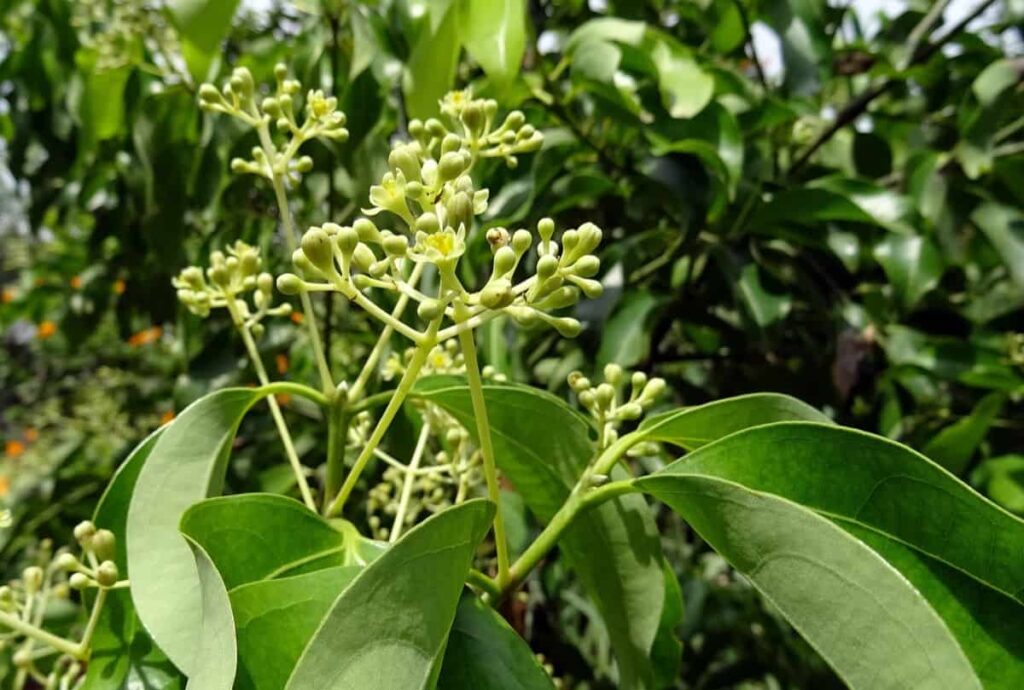
These regions’ climate and soil conditions are ideal for growing cinnamon trees. Cinnamon farms are usually small, family-run operations. The farmers carefully tend to their crops, ensuring that the trees are healthy and produce high-quality Cinnamon. This blog post will go through the Cinnamon farming business plan and its cultivation practices.
Advantages of a cinnamon farming business
There are many different types of businesses, and each has its advantages and disadvantages. One type of business you should consider is cinnamon farming. Cinnamon farms can be very profitable and offer many advantages over other types of businesses. First, Cinnamon is a highly sought-after spice.
It is used in many different cuisines worldwide, and its demand is always high. If you start a cinnamon farm, you will never have to worry about finding customers for your product. Second, Cinnamon is relatively easy to grow. It does not require much special care or attention and can be grown in many different climates. This makes it a good option for those who want to invest less time and effort into their business.
Climate requirement for cinnamon farming
Cinnamon trees can be grown in a wide range of climates, from tropical to subtropical. However, the ideal climate for cinnamon farming is warm and humid, with plenty of rainfall. Cinnamon trees generally require a minimum temperature of 18°C (64°F) to grow and produce fruit. They also prefer high humidity levels and ample rainfall. In terms of specific regions, Cinnamon is typically grown in countries like Sri Lanka, India, Indonesia, Vietnam, and China. These countries all have tropical or subtropical climates conducive to cinnamon production.
In case you missed it: Cabbage Farming Business Plan: How to Grow from Seed to Harvest
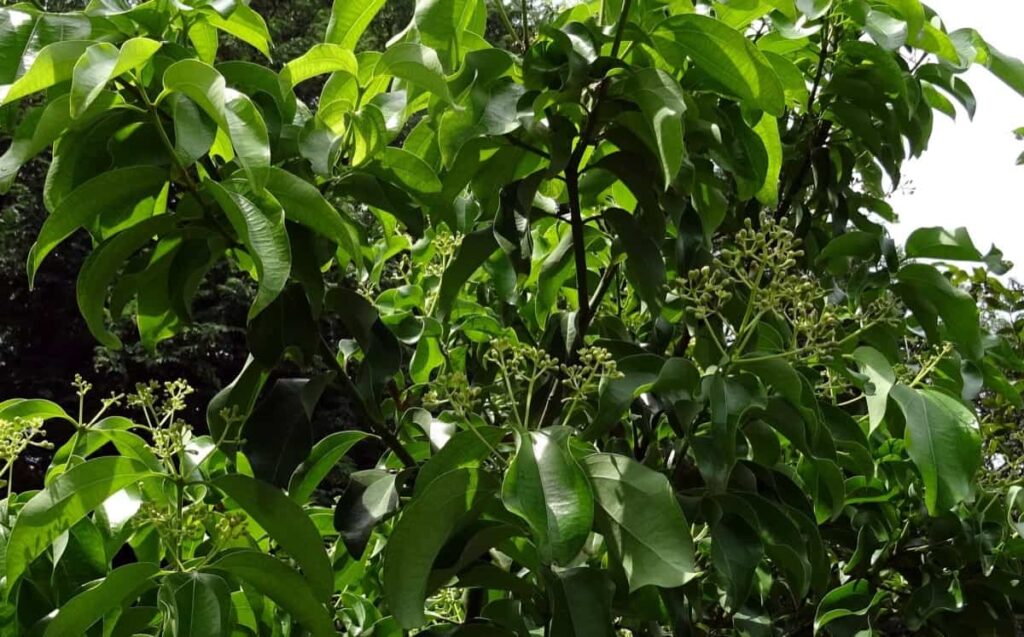
How to prepare the soil for cinnamon farming
Cinnamon farming is a process that requires the right type of soil to be successful. The first and foremost step in preparing the soil for cinnamon farming is to test the soil to see if it is suitable. If the soil is too sandy, it will not hold enough moisture, and the plants will not be able to get the nutrients they need. If the soil is too clay-like, it will compact and prevent air from reaching the roots of the plants.
The ideal type of soil for cinnamon farming is loamy, with a slightly acidic pH level (6.2–7.2). Once the right kind of soil has been identified, it needs to be prepared for planting. First, the soil should be loosened, and any large rocks or debris removed. Next, a layer of organic matter should be added to the top of the soil to help retain moisture and provide plant nutrients. The organic matter can be in the form of compost, aged manure, or mulch.
After preparing the soil, it is time to plant the cinnamon trees. The trees should be planted at least 10 feet apart, so they have room to grow. Once planted, they should be watered regularly and fertilized according to the manufacturer’s instructions. With proper care, the trees will produce Cinnamon within a few years.
Best time to plant cinnamon crop
When it comes to Cinnamon, the best time to plant it is during the early spring. This is because the soil is still moist from the winter rains and the temperatures are not too hot. If you plant during the summer, the heat can damage the roots of the plants, and they will not grow as well.
Cinnamon verities/types
There are 2 main types of Cinnamon species: Ceylon and cassia. Ceylon cinnamon, also known as “true” Cinnamon, is grown in Sri Lanka, India, Madagascar, and Seychelles. Cassia cinnamon is grown in Indonesia, Vietnam, and China. Within these two categories, there are many different varieties of Cinnamon. Ceylon cinnamon is lighter in color and has a thinner bark. It is also more delicate in flavor than cassia cinnamon.
Ceylon cinnamon is more expensive than cassia cinnamon because it is harder to grow and harvest. Cassia cinnamon is the type of Cinnamon most commonly found in supermarkets. It is darker in color and has a thicker bark. Cassia cinnamon has a stronger flavor than Ceylon cinnamon.
In case you missed it: Carrot Farming Business Plan: How to Grow from Seed to Harvest
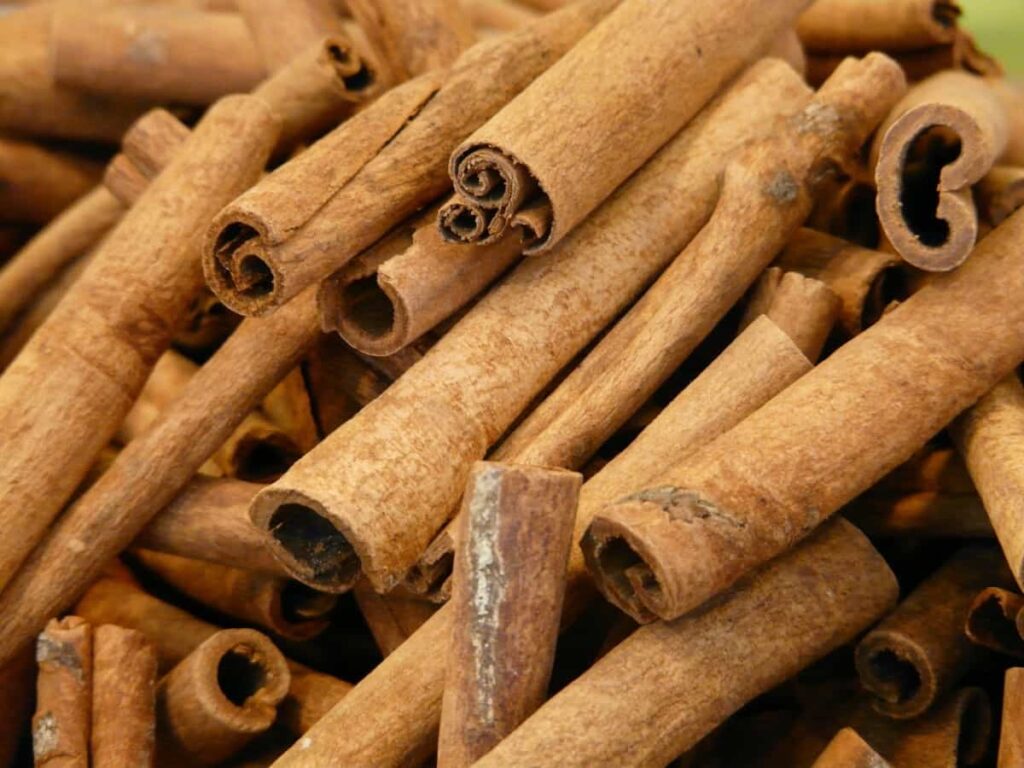
Common varieties of Ceylon cinnamon
- Vietnamese Cinnamon: This variety is grown in Vietnam and has a strong flavor with a hint of sweetness.
- Korintje Cinnamon: This Indonesian variety is milder in flavor than Vietnamese Cinnamon.
- Chinese Cinnamon: This Chinese variety has a strong, sweet flavor.
Common varieties of cassia cinnamon include:
- Saigon Cinnamon: This Vietnamese variety is the strongest-flavored type of cassia cinnamon.
- Indonesian Cinnamon: This variety has a milder flavor than Saigon Cinnamon.
- Chinese Cassia: This Chinese variety has a sweet flavor with a hint of spice.
Propagation in cinnamon farming
Cinnamon can be propagated by seed or vegetatively by cuttings. Seed propagation is generally only used by commercial growers, as it is a slower and less reliable method than vegetative propagation. To propagate Cinnamon by seed, farmers first need to obtain healthy seedlings from a reputable source. The seedlings are then planted in well-drained soil in an area with full sun exposure.
Once they have germinated and grown to a few inches in height, they can be transplanted into individual pits. Farmers must carefully monitor seedlings during their first growing season, as they are susceptible to drought stress and pests. After that, vegetative propagation is the preferred method for most small-scale growers, as it is faster and more reliable than seed propagation.
Vegetative propagation is typically done by rooting stem cuttings. Cuttings should be taken from young, healthy trees during the spring or summer months. The cuttings should be around 10-15 cm in length and taken from new growth at the tips of the cinnamon branches. They should be planted in a well-drained media and kept moist until they root.
Where to purchase cinnamon seeds/cuttings
If you’re looking for a place to purchase cinnamon seeds or cuttings, some options are available. First, you can find cinnamon trees for sale at many nurseries or online retailers. Alternatively, if you have a friend or family member who has a cinnamon tree, you can get seeds or cuttings from them.
How to plant Cinnamon from cuttings
Cinnamon farming is a process that can be used to propagate new plants from cuttings. Farmers often use this method of planting to produce larger and healthier plants. To successfully grow from cuttings, farmers must take several steps. First, farmers must select a healthy plant they wish to propagate. The plant should be free of disease and pests and at least one year old.
Next, farmers need to take cuttings from the chosen plant. Cuttings should be approximately six to eight inches long and include leaves and stem tissue. After taking the cuttings, farmers need to prepare the planting area. The area should be well-draining and free of debris. Farmers also need to create a rooting hormone solution, which can be made using cinnamon bark extract and water.
Once the planting area is prepared and the rooting hormone solution is ready, farmers can plant the cuttings. Cuttings should be planted in pits dug with 60 cm x 60 cm x 60 cm dimensions and placed approximately 10 to 12 feet apart. After planting, farmers need to water the area well and provide shade for the newly planted cuttings.
In case you missed it: Shrimp Farming Business Plan: Every Aqua Farmer Should Know Before Getting Started

Providing support/staking for your cinnamon plants
Staking cinnamon plants is a way to keep them upright and healthy. The best way to stake a cinnamon plant is to use a piece of sturdy wire that’s at least twice the plant’s height. Make a loop with the wire around the stem at the base of the plant, and then twist the wire around the stem once or twice. Make sure the twist is tight, and then attach the loop to a sturdy post or tree.
Mulching your cinnamon plants
Mulching your cinnamon plants is vital to help protect the roots from extreme temperature changes, prevent the soil from becoming too dry or compacted, and provide essential nutrients. Many different mulch types are available, so be sure to select one best suited for your particular climate and soil type.
Organic mulches such as wood chips, straw, leaves, or compost are the best options for cinnamon plants. Be sure to apply a thick layer (2 to 4 inches) around the base of the plant, avoiding any contact with the stem. This will help to insulate the roots and prevent them from drying out or becoming too hot.
Cinnamon transplanting and spacing
When transplanting Cinnamon, space the plants at least 10 feet apart. 60 cm x 60 cm x 60 cm pits are ideal for planting cinnamon cuttings. If planting more than one row of Cinnamon, space the rows 10 to 12 feet apart. You will also need to support the cinnamon plants as they grow.
How to prune your cinnamon plants
If your cinnamon plant looks overgrown, you may need to give it a good prune. Pruning cinnamon tree helps to encourage new growth and can also help to keep your plant healthy. Here are a few tips and ideas on how to prune your cinnamon plants:
- First, identify the areas of your plant that need to be pruned. You will want to remove any dead or dying branches, as well as any that are crossing or rubbing against each other.
- Using sharp pruning shears, make clean cuts at a 45-degree angle just above a set of leaves.
- Sterilize your shears between each cut by wiping them down with boiling water. This will help to prevent the spread of disease.
- After you have finished pruning, water your plant well.
How to care for cinnamon plants
Cinnamon plants need a warm climate with high humidity and plenty of water. They also need well-drained, rich soil that is high in organic matter. Cinnamon plants should be kept moist but not wet when it comes to watering. Water cinnamon plants when the top inch of the soil feels dry. Do not overwater, as this can lead to root rot.
Cinnamon plants also need regular fertilization. Make sure to use a balanced fertilizer high in nitrogen and low in phosphorus. Apply it every 2 weeks during the growing season. Finally, make sure to prune your cinnamon plant regularly. Pruning will encourage new growth and help keep the plant healthy.
In case you missed it: Bamboo Farming Business Plan: How Bamboo Could be the Next Eco-Friendly Business
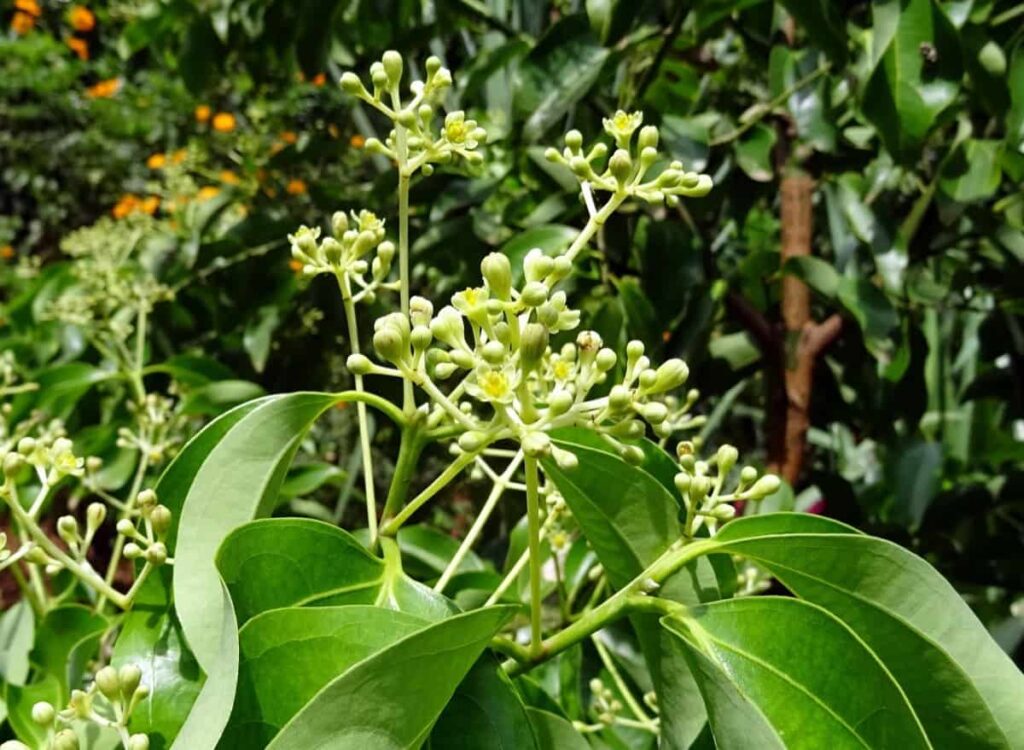
Best fertilizers for your cinnamon crop
Cinnamon plants are heavy feeders and need plenty of nutrients to produce high-quality spices. There are a variety of fertilizer formulations that will work well for cinnamon plants. A general-purpose fertilizer with an N-P-K ratio of 10-10-10 or 12-12-12 is a good option. You can also feed an organic fertilizer such as compost or manure. If you’re using synthetic fertilizer, be sure to follow the manufacturer’s instructions carefully.
Overfertilization can be detrimental to cinnamon plants, so it’s important to apply fertilizer sparingly. Once every two weeks is usually sufficient. You can apply fertilizer around the base of the plant, taking care not to get any on the leaves or stems. Water thoroughly after fertilizing your cinnamon trees. Applying fertilizer to help the nutrients reach the roots.
When and how to water cinnamon crop
Cinnamon is a hardy crop that can withstand drought, but it will produce best with regular watering. Water the cinnamon plants when the top few inches of soil are dry. Cinnamon likes a lot of water, so make sure to give it a good soaking. You will need to let the soil dry out in between waterings to prevent root rot. The best time to water the cinnamon crop is early morning or late evening.
How to control weeds in cinnamon farming
Weeds are one of the biggest problems farmers face. They compete with crops for water, sunlight, and nutrients and can harbor pests and diseases. There are several ways to control weeds in cinnamon farming. Mechanical methods include hand-pulling, hoeing, and cultivating. Chemical methods involve using herbicides. The best method to control weeds is to prevent them from growing in the first place. This can be done by keeping the area around the cinnamon plants free of debris and weeds and mulching heavily.
Pests, diseases, and their control in cinnamon farming
Cinnamon’s most common pests and diseases are the following: Cinnamon Aphids: These small, black insects feed on the sap of the cinnamon plant, causing the cinnamon leaves to turn yellow and curl up. Cinnamon aphids can also transmit viruses to plants.
Red Spider Mite
This tiny mite feeds on the chlorophyll of plants, causing the leaves to turn red and eventually drop off. Whitefly. These small whiteflies feed on the sap of plants and excrete a sticky substance called honeydew.
Gray mold
This fungal disease affects many plants, including Cinnamon. Gray mold causes the leaves of infected plants to turn gray or brown and eventually die. The best method to control pests and diseases in cinnamon farming is combining chemical and biological controls. Chemical controls include spraying pesticides on crops, while biological controls involve using predators or parasites to control pests.
When and how to harvest Cinnamon?
Harvesting Cinnamon when the tree is at least three years old is best. Cut the cinnamon stem to harvest with a sharp knife just above a leaf node. You can then strip the bark from the stem. The inner bark is what is used to make Cinnamon. It can be dried and used whole or ground into powder.
Cinnamon yield per acre
Cinnamon spice is obtained from the inner bark of the Cinnamon tree. The bark is peeled and then dried. Ground cinnamon is used to make various spices. The yield of Cinnamon per acre in kg is about 150 kg quills per acre (3 years old). The yield depends on plant age, variety, and other factors.
In case you missed it: Farming Business Plan PDF: for Poultry, Livestock, Agriculture, Horticulture, Greenhouse, and Hydroponic
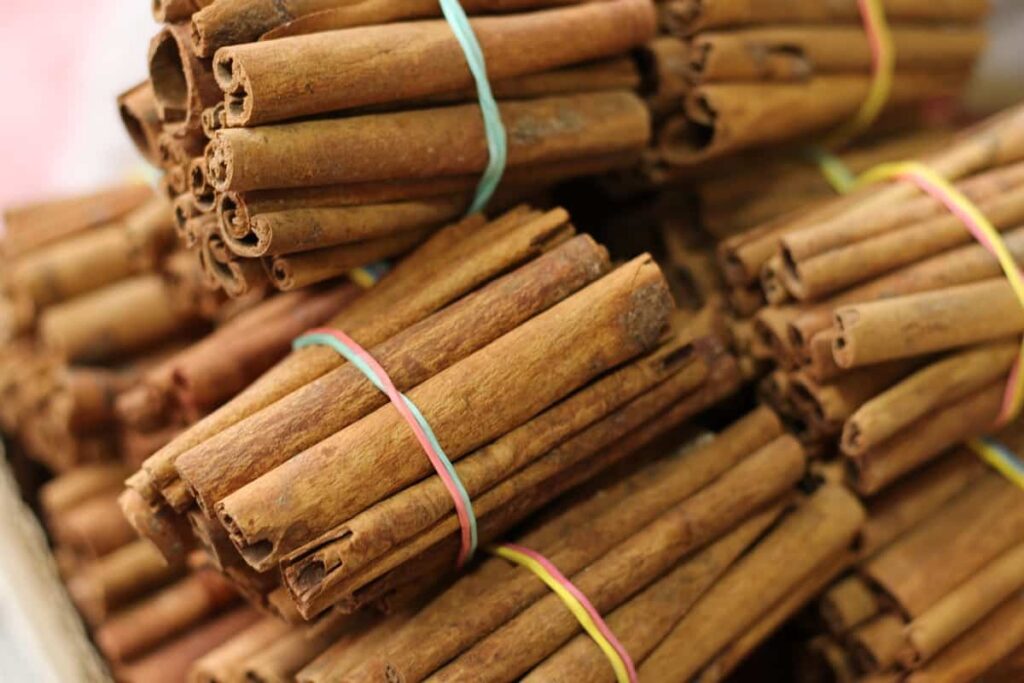
Cinnamon farming business plan
If you are considering starting a cinnamon farm, your first step is to develop a business plan. This will help you figure out the costs and revenue associated with running your farm and outline the specific goals you hope to achieve. The first and foremost step in developing a business plan is to figure out the costs of running your farm. This includes land and equipment rental, production costs (such as fertilizer and fuel), and marketing expenses. You also need to factor in profits, which include net income after expenses are paid.
Next, you need to decide what revenue you hope to generate from your farm. This includes factors like price per kg or pound of Cinnamon sold, the number of customers you expect to serve, and the amount of time it will take to reach those customers. You can also look into marketing opportunities, such as sponsoring events or creating brochures. Once you have an estimate for the costs and revenue associated with operating your farm, you can develop a plan for how to achieve those goals.
This might involve setting up a budget and tracking actual spending against projected income, increasing production levels when prices are high, or exploring new marketing strategies. Overall, developing a business plan is essential for any farm looking to succeed. By outlining all the costs and potential income associated with cinnamon farming, you can make sure that your project is feasible and will generate the desired results.
Conclusion
Cinnamon farming is very profitable, with high yields and low input costs. The main challenges in cinnamon farming are pests and diseases. However, you can achieve desired yields with a proper business plan and care.
- How to Raise Pigs in Your Own Backyard: A Comprehensive Guide
- Budget Friendly Sheep Shed Ideas: Cheap and Low-Cost Tips
- How Much Do Cattle Farmers Make: Revenue Streams in Cattle Farming
- Management Pests and Diseases in Your Cotton Field
- Sheep Farming Business Plan for Beginners
- Aquaponic Farming at Home: A Step-By-Step Guide
- Profitable Village Farming Business Ideas in 2024
- High-Yield Aquaculture: Fast-Growing Fish for Farming
- Effective Fish Pond Construction Techniques for Beginners
- Irrigation and Water Management in Pineapple Farming
- Blossom to Harvest: Mastering Flowering and Pollination in Papaya Farming
- Pig Fattening Essentials: From Selection to Sale for Beginners
- Raising Wagyu Cattle: A Complete Guide for Premium Beef Production
- Soil Types and Their Water Holding Capacity
- Optimizing Irrigation Schedules for Coconut Groves for Enhanced Yield
- Espresso Your Garden: Coffee Grounds for Healthier Acid-Loving Plants
- The Best Soil Mix for Snake Plants: How to Mix Your Own Snake Plant Soil
- Green Thumb Success: Expert Tips for Cultivating Greenhouse Beans All Year Round
- Bloom All Year Round: The Ultimate Guide to Indoor Hyacinth Care
- Eco-Friendly Gardening: How to Make Liquid Fertilizer from Kitchen Waste
- Ultimate Guide to Grow Anise in Pots: Explore Seed Propagation to Harvesting
- Guide to Raising Chester White Pigs: Discover Breed Facts to Growth Management
- Mastering the Elegance: The Ultimate Guide to Weeping Cherry Tree Care, Planting, and Maintenance
- Ultimate Guide to Planting Garlic in Grow Bags: Growing Strategies for Beginners
- How to Fix Spider Plant Leaf-Related Problems: Natural and Organic Remedies
- 10 Reasons Why Your Tulsi Plant is Shedding Leaves: Home Remedies and Solutions
- Optimizing Growth and Yield: The Advantages of Palm Bunch Ash Fertilizer
- Utilizing Neem Oil Extract as a Natural Pesticide for Hydrangea
- From Soil to Harvest: Various Ways in Which Farmers Can Use AI Tools
- Steps to Encourage and Induce Citrus Flowers: A Comprehensive Guide
- How to Fix Snake Plant Leaf-Related Issues: Natural and Organic Remedies
- Transform Your Garden into a Fragrant Oasis with Raat Ki Rani (Night Blooming Jasmine)
- Discover the Ideal Chicken Breeds for Philippine Farms
- How to Create a Poultry Egg Farm Business Plan for Profits
- Grow Lemon Cucumbers Like a Pro: Insider Techniques for Bountiful Yields
- Ultimate Guide to Caring for Your Pink Princess Philodendron: Tips for Thriving Variegation
